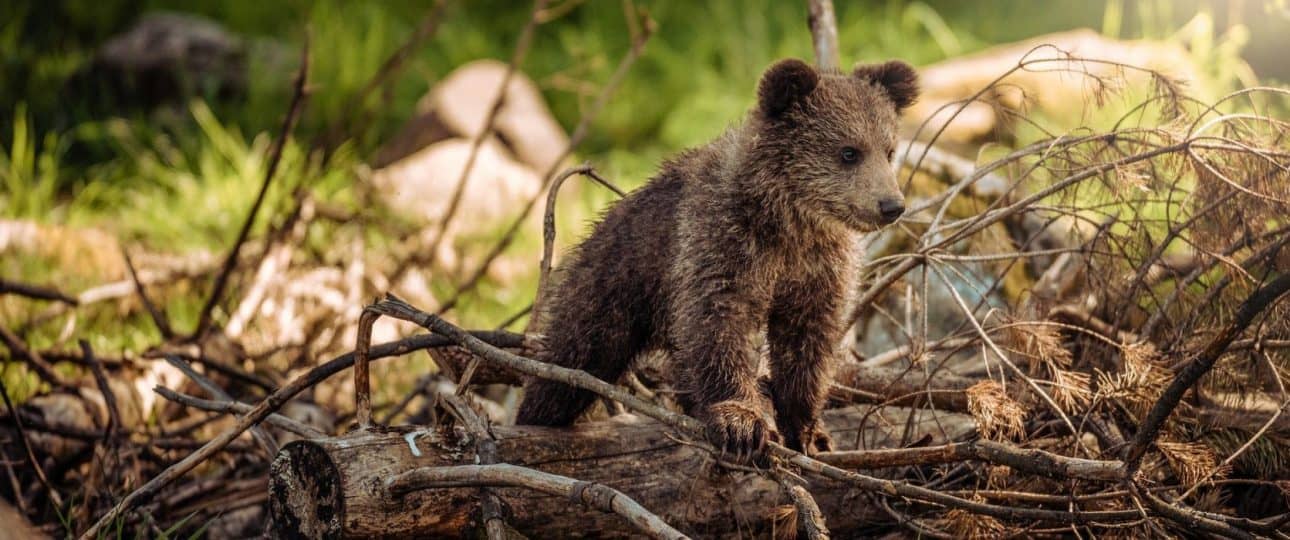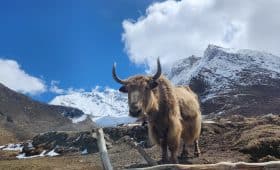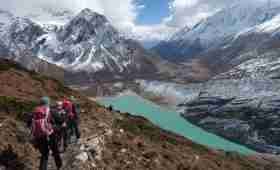Nepal is a land of diversity, encompassing nature, culture and people within its small territory. Visitors to Nepal will encounter a wide variety of landscapes and be amazed by the fascinating wildlife of Nepal.
This diverse topography is home to millions of flora and fauna. With every hundred meters traveled, one experiences a newness in the surroundings and encounters different wildlife.
The varied terrain, along with its accompanying climate and living conditions, offers a perfect environment for a great number of animals that have inhabited the country for centuries.
With ecosystems ranging from the tropical Terai plains all the way up to the arctic temperatures of the Himalayas, the country provides suitable conditions for all forms of life.
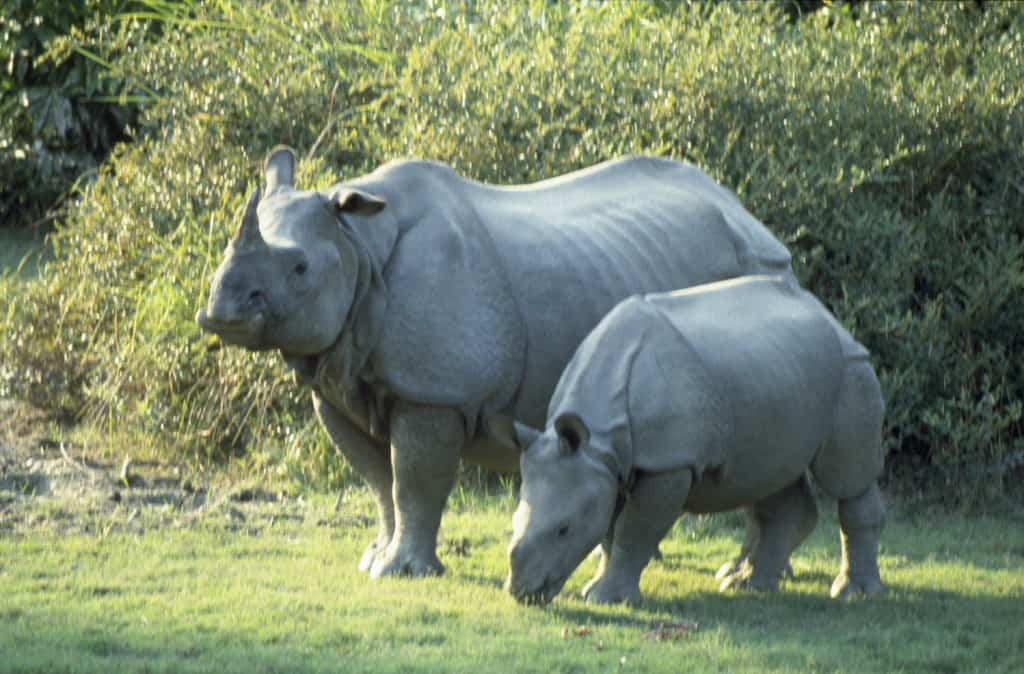
The fascinating wildlife of Nepal can be categorized according to the three distinct terrains of the country, namely the plains of Terai, the hilly region and the snow topped Himalayan mountains.
The Terai region is not just the agricultural hub of the country, it is also home to lush jungles inhabited by some of the most exotic and endangered animals in the world.
The rarest animals reside in the various national parks and wildlife conservation areas in the region. It includes mammals like the one-horned rhinoceros, the Bengal tiger, the leopard, the four-horned antelope and the Indian elephant.
While the reptiles like the Burmese python and the Gharial crocodile; and birds like the Black stork, the Hornbill, and the Bengal Florican.
Taking a jungle safari in well preserved Chitwan and Bardia National Park is a great way to experience the wildlife first hand. Or, even better, going on an jeep ride – this will really allow you to witness these animals in their natural habitat and state.
We recommend avoid Elephant back safari, we here at Mosaic Adventure, no longer offer elephant riding tours.
Spotted leopards, river dolphins, endangered wild ‘Arna’ buffalo, blackbucks, migratory birds and the Elephant and Gharial breeding center are just a handful of the main attractions of the area.

The hilly region of the country, which borders the two extremes of the Terai plains and the Himalayan mountains, has moderate weather all year round and is most famous for bird-watching.
With the new finding of the Lesser Grey Shrike (Lanius minor) in 2023, Nepal now boasts a total of 892 species of birds and a diverse variety of pheasants, including the national bird, Himalayan monal (Lophophorus impejanus). These birds are mostly seen in the lush forests of the hilly areas during trekking trips.
In the spring, when the hills are covered with beautiful Rhododendrons, you’ll see a plethora of birds singing and dancing throughout this awe-inspiring landscape. While the mountain region of Nepal is mostly famous for its majestic peaks and its climbing expeditions, the wildlife of this area is truly one of the hidden treasures of the world.
Here, the most sought-after animals are the snow leopard, the red panda, the Himalayan blue sheep, the Himalayan goat, mules, and yaks.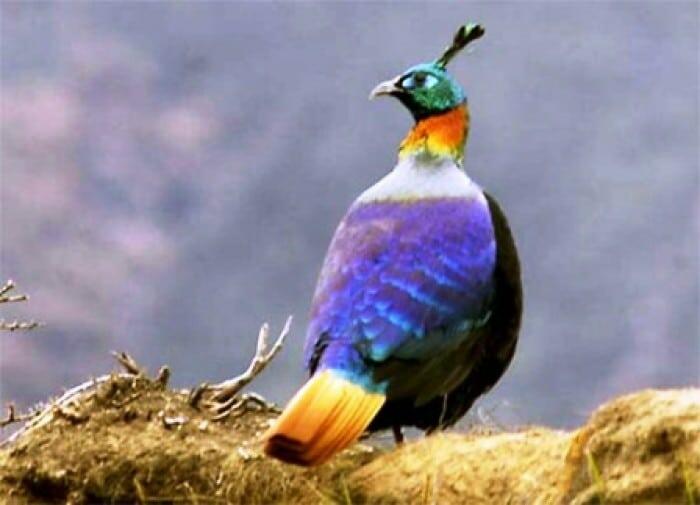
And let’s not forget that the conservation areas and reserves foster the correct balance in nature only by sheltering the flora that flourishes throughout different regions of the country. There are different national parks and conservation area which protects the shelter of different animals that varies with the change in territory.
When it comes to vegetation, the country is home to plants ranging from algae to the tallest conifers in the world. The Terai region – also known as the ‘breadbasket of Nepal’ – boasts mostly Sal, hardwood, bamboo and palm trees, together with Nepal’s cash and food crops.
The hill and mountain areas are also home to a wide range of flora including dense oak and pine forests, and treeless pastures and conifer forests respectively. The most famous of all is the red rhododendron flower (which is also the national flower) and is usually found in higher hilly areas.
And, so, Nepal is known to the world as the home of Lord Buddha, the home of the highest mountain on earth, and then home to hundreds of thousands of birds, animals, plants, and insects all of which are protected by conservation efforts on both the local and national levels.
The fascinating wildlife of Nepal is yet another facet of the country’s natural wonders that are worth experiencing time and time again.
Table of Contents
- Fascinating Wildlife of Nepal
- Bengal Tiger
- One-Horned Rhinoceros
- Asian Elephant
- Snow Leopard
- Red Panda
- Himalayan Musk Deer
- Gharial
- Himalayan Monal
- Pheasants
- Eagles
- Himalayan Black Bear
- Clouded Leopard
- Indian Leopard
- Himalayan Thar (or Tahr)
- Himalayan Serow
- Indian Bison (Gaur)
- Wild Boar
- Mugger Crocodile
- Python
- Himalayan Cobra
- Himalayan Blue Sheep (Bharal)
- Golden Langur
- Assam Macaque
- Himalayan Griffon Vulture
- White-Bellied Heron
- Himalayan Bulbul
- Himalayan Marmot
- In Conclusion,
Fascinating Wildlife of Nepal
Here are some notable wildlife species found in Nepal:
Bengal Tiger
Endangered big cat species with striking stripes, found in Nepal’s famous national parks, like Chitwan and Bardia.
One-Horned Rhinoceros
Rare and armored herbivores with a single horn, primarily inhabiting Chitwan National Park.
Asian Elephant
Gentle giants with impressive tusks, residing in Nepal’s Terai region including Chitwan and Bardia National Parks.
Snow Leopard
Elusive and well-adapted to high-altitude habitats in the Himalayas, known for their thick fur and incredible agility.
Red Panda
Cute and arboreal mammals, resembling a mix of a raccoon and a bear, found in Himalayan forests like Langtang and Makalu Barun National Parks.
Himalayan Musk Deer
Small, solitary deer with long canine teeth, inhabiting the rugged terrains of the higher Himalayas.
Gharial
Critically endangered crocodile species, distinguished by their long, thin snouts and inhabiting Nepal’s rivers, including Narayani and Rapti in Chitwan National Park.
Himalayan Monal
Colorful and national bird of Nepal, known for its radiant plumage and striking appearance.
Pheasants
Various species of pheasants, including the Satyr Tragopan, Himalayan Monal and Blood Pheasant, contribute to Nepal’s vibrant avian diversity.
Eagles
Nepal is home to several majestic eagle species, such as the Golden Eagle and Steppe Eagle, soaring through the skies with their impressive wingspans.
Himalayan Black Bear
A medium-sized bear species with a black coat, found in the forests of the Himalayas, including regions like Langtang National Park and Sagarmatha National Park.
Clouded Leopard
Elusive and agile big cat known for its cloud-like markings, inhabiting the forests of Nepal’s hilly and mountainous regions.
Indian Leopard
Another leopard species found in Nepal, primarily in the Terai region and lower hills.
Himalayan Thar (or Tahr)
A large, goat-like mammal adapted to rocky mountainous terrain, seen in the higher elevations of the Himalayas. If you are planning to do Everest Base Camp Trek, there is a high chance of you encountering Himalayan Thar on the trail.
Himalayan Serow
An agile and shaggy-haired goat-antelope species found in the Himalayan region, known for its remarkable climbing abilities.
Indian Bison (Gaur)
The largest extant bovine species, with a muscular build and distinctive horns, found in Nepal’s national parks, including Chitwan and Bardia.
Wild Boar
A widely distributed and adaptable mammal, known for its stout body, tusks, and omnivorous diet, found in various habitats throughout Nepal.
Mugger Crocodile
A freshwater crocodile species found in rivers and wetlands of Nepal, including the Narayani and Rapti rivers.
Python
Various species of pythons, including the Indian Rock Python, can be found in the forests and grasslands of Nepal.
Himalayan Cobra
Venomous snake species with iconic hood markings, inhabiting the foothills and lower elevations of the Himalayas.
Himalayan Blue Sheep (Bharal)
A species of wild sheep found in the Himalayas, known for their bluish-gray coat and impressive climbing abilities.
Golden Langur
An endangered primate species found in the eastern parts of Nepal, characterized by their golden fur and long tails.
Assam Macaque
A species of Old World monkey found in the forests of Nepal, living in social groups and foraging for food.
Himalayan Griffon Vulture
A large scavenging bird with a wingspan of over 2 meters, commonly seen in the Himalayan region, including areas like Annapurna Conservation Area and Langtang National Park.
White-Bellied Heron
A critically endangered bird species with a distinct white belly, found in the riverine habitats of Nepal.
Himalayan Bulbul
A small songbird with a melodious call, commonly found in the forests and shrublands of Nepal.
Himalayan Marmot
A social rodent species that inhabits high-altitude meadows and slopes in the Himalayas.
In Conclusion,
Nepal, a land of diverse landscapes and cultures, surprises visitors with its rich biodiversity.
From the lush forests of the Terai plains to the peaks of the Himalayas, Nepal offers habitats for a wide range of animals, including the endangered Bengal Tiger, the majestic One horned Rhinoceros and the elusive Snow Leopard.
National parks like Chitwan and Bardia provide opportunities for wildlife enthusiasts to witness these remarkable creatures in their natural habitat.
With over 892 bird species and numerous rare mammals, Nepal’s diverse wildlife continues to captivate visitors from around the world.
Want more information? Send us your query, and our experts will get back to you within 24 hrs.

Madhav started working as a porter in 2001 and then moved on to work as a trekking guide. After working in the trekking and tourism industry for eight years, he co-founded Mosaic Adventure in 2009.
Madhav has trekked to most of the trekking destinations in Nepal, including Everest Base Camp Trek, Annapurna Base Camp, Annapurna Circuit Trek, Poon Hill Trek, Jomsom Muktinath Trek, Indigenous Peoples Trek, Langtang Valley Trek, Mardi Himal Trek, and all of the day hikes around Kathmandu.
He has also extensively traveled to other countries such as Australia, the USA, the UK, France, Hong Kong, Japan, China, the Philippines, the UAE, Saudi Arabia, Bahrain, Thailand, Turkey, and India. Madhav is the one who answers most of your questions about trekking and tours and helps to plan your trip by giving a personal touch.

